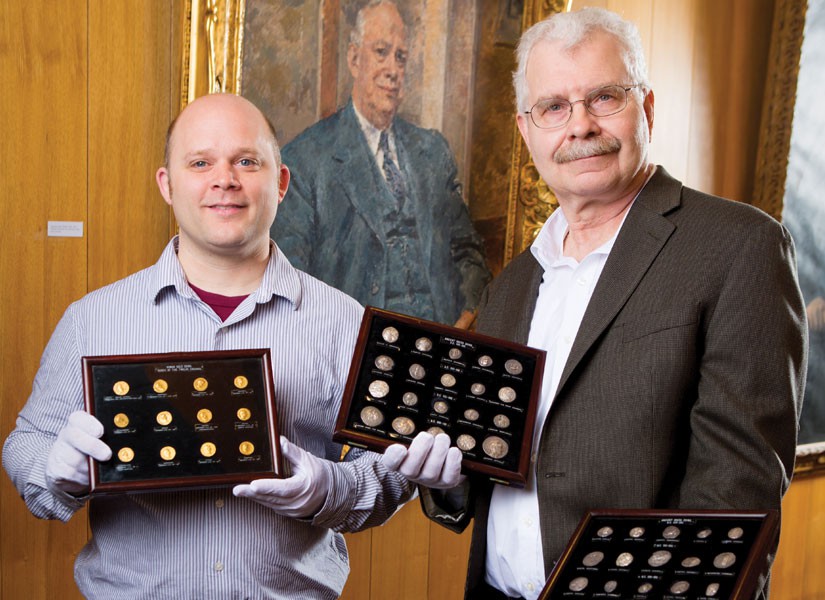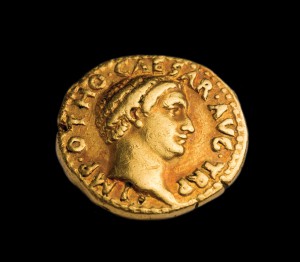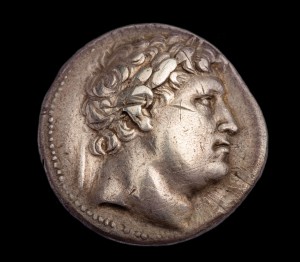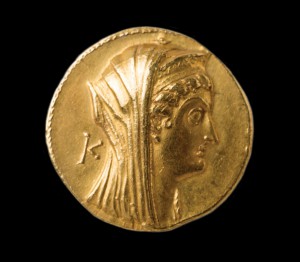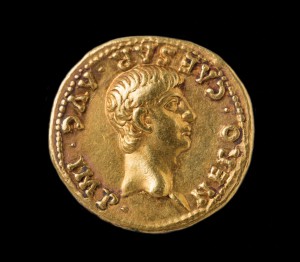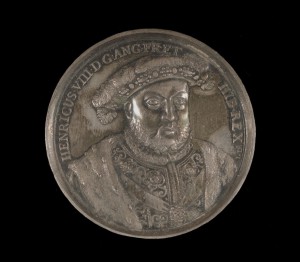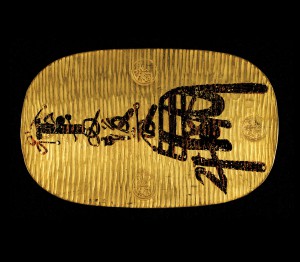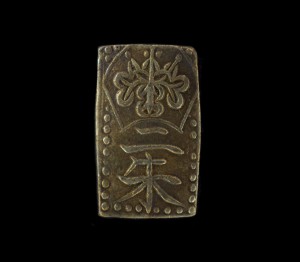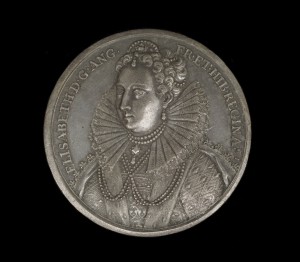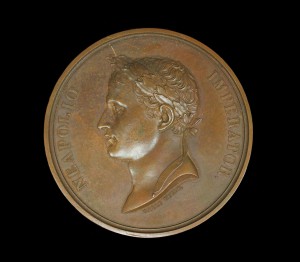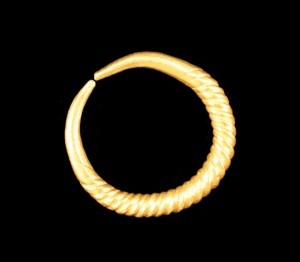Coins donated in 1935 to the UB Libraries Special Collections by Thomas B. Lockwood are part of a larger collection of rare books.
A portrait of Thomas B. Lockwood, one of the University Libraries greatest benefactors, hangs near the entrance to the Special Collections Reading Room in Capen Hall. Eighty years ago, this Buffalo-born businessman, together with his wife, Marion Birge Lockwood, generously donated $500,000 (more than $6 million now) to help build and maintain a signature library for the University of Buffalo.
If Lockwood’s portrait could somehow share details of his life story, it would describe a man born in 1873 to a prominent Buffalo family. It would tell of Lockwood’s lifelong passion for collecting rare books, and recall that he assembled a magnificent private library during the early decades of the 20th century, a period often viewed as the golden age of American book collecting.
The portrait would also describe how, in 1935, Thomas Lockwood donated his collection of treasured first editions and rare volumes representing classic works of English and American literature to the University of Buffalo for its new library, an act Thomas Bolze of Yale University’s Beinecke Rare Book & Manuscript Library describes as “transforming a gentlemanly hobby into an act of public beneficence.” (Libraries and the Cultural Record, 2010).
In addition to donating his remarkable collection of rare and special books to the University Libraries, Lockwood provided a set of ancient gold and silver Greek and Roman coins that he purchased at auction in 1925. He also donated coins he had collected from early America, England and Japan, along with a variety of commemorative medallions, including a glass-encased set of U.S. presidential medallions and dozens of bronze medallions featuring the French emperor, Napoléon Bonaparte.
- Otho. Roman Emperor; reigned for three months in 69 AD
- Eumenes II, King of Pergamom; ruled from 197-159 BCE
- Ptolemy II, Macedonian King of Egypt, 285-246 BCE
- Athens (Attica), 550-500 BCE
- Syracuse (Sicily), 450-400 BCE
- Nero, Roman Emperor, 54-68 AD
- Henry VIII, King of England, 1509-1547
- Japanese currency – Tempo Oban, 1838
- Japanese currency – Ansei Ni Shu, 1856
- Elizabeth I, Queen of England, 1558-1603
- Napoléon Bonaparte, Emperor of France, 1804-1814, 1815
- British gold ring, used as an early form of currency.
The ancient coins, most of which are in excellent condition, drew national and international attention earlier this year when Philip Kiernan, assistant professor in the UB Department of Classics, examined the 40 silver Greek coins, three gold Greek coins, and a dozen gold Roman coins. Kiernan, who focuses much of his scholarly research on ancient coins and antiquities, expected to find a set of replicas. He sought the help of two expert numismatists, and was surprised when he learned that the ancient Greek and Roman coins are authentic.
Most of the coins are in excellent condition, despite remaining in their original 80-plus-year-old casing. The silver Greek coins, known as tetradrachm, come in a variety of sizes and weights. The smaller Roman coins, known as aurei, come from each era of the first twelve Roman emperors, from Julius Caesar to Domitian, and range in date from the fifth century B.C. to the late first century A.D. “The Greek coins were struck by some of the most powerful city-states and rulers of the ancient world, such as Athens, Corinth and Alexander the Great,” says Kiernan. Also included in the collection, he adds, is a “remarkably rare” coin of the Roman emperor Otho, who reigned for a mere three months in 69 A.D.
While the Greek and Roman coins were the primary focus of recent national and international media attention – drawing coverage from NPR, Forbes and more – the British and Japanese coins are also notable. Among them are more than 30 British gold coins which bear the images of various nobles, including Queen Elizabeth I, Queen Victoria, Edward III and Henry VIII, the king famous for his six marriages.
The Japanese coins, which date to feudal Japan, include a koban, an oval, cell phone-sized plate of gold that, during the period, could afford one person enough rice to eat for a year. The collection also includes several Celtic coins from the Medieval period ranging from coins that attempted to imitate Greek currency to small nuggets or rings of gold that were commonly used in trade.
The coins and medallions are available for study by members of the campus and local communities pursuing relevant research. Kiernan is planning to lead one such group of researchers. He also is planning to develop a graduate course in which students will examine the ancient coins and their history. In the class, tentatively scheduled for the Spring semester of 2016, each student will be assigned one coin to study. The students will photograph, weigh and measure the items, and identify all the symbols and figures on each coin. Afterwards, they will work to identify the exact year the coin was made, a process that involves hunting down similar coins from the same era created with the same stamp. Currently, most of the coins are broadly dated based on the reign of the ruler whose image it bears. Kiernan’s course will mark the first time the coins will be extensively studied.
“This is a great opportunity for UB students and others to have access to a sophisticated, dynamic and rare resource,” says Michael Basinski, Curator of Special Collections. “Being able to see and hold actual antiquities brings the subject alive for students in a way that other forms of study simply don’t allow,” adds Kiernan, whose students will publish
their findings.
Thomas Lockwood would surely be pleased.
